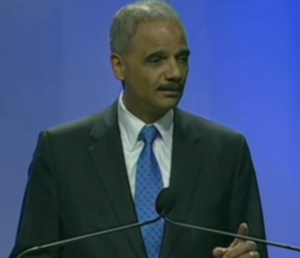 By David A. Schulz
For Washington Post
By David A. Schulz
For Washington Post
As Eric Holder reflects on his six years as attorney general, one disturbing aspect of his legacy should give him significant pause. On Holder’s watch, legal protections traditionally afforded to communications between reporters and sources have been torn down, potentially damaging for years to come the media’s ability to uncover and report on government missteps. The attorney general should acknowledge the problems and address them before leaving office.
Holder has faced harsh criticism for pursuing two related strategies that undermined reporter-source communications. The first denied that any “reporter’s privilege” exists — and just this year the Supreme Court let stand an appellate court ruling adopting Holder’s position.
That ruling came in response to a prosecutor’s demand that Pulitzer Prize-winning reporter James Risen disclose his source for a report on the CIA’s effort to subvert Iran’s nuclear program. Although a reporter’s privilege has been recognized for decades in other contexts, a divided court of appealsaccepted the Justice Department’s argument that no evidentiary privilege allowed Risen to refuse to identify his source in a criminal prosecution. Under this ruling, the question of whether to require a reporter to reveal a source rests with the prosecutor alone.
The ruling is an unflinching rejection of a reporter’s right to make a binding promise of confidentiality in exchange for information. It is a direct assault on the foundation of trust needed for effective investigative reporting and threatens to limit severely disclosures by government whistleblowers. That Holder’s Justice Department fought for just this ruling caused some media lawyers to label this administration “worse than Nixon” for the free press.





